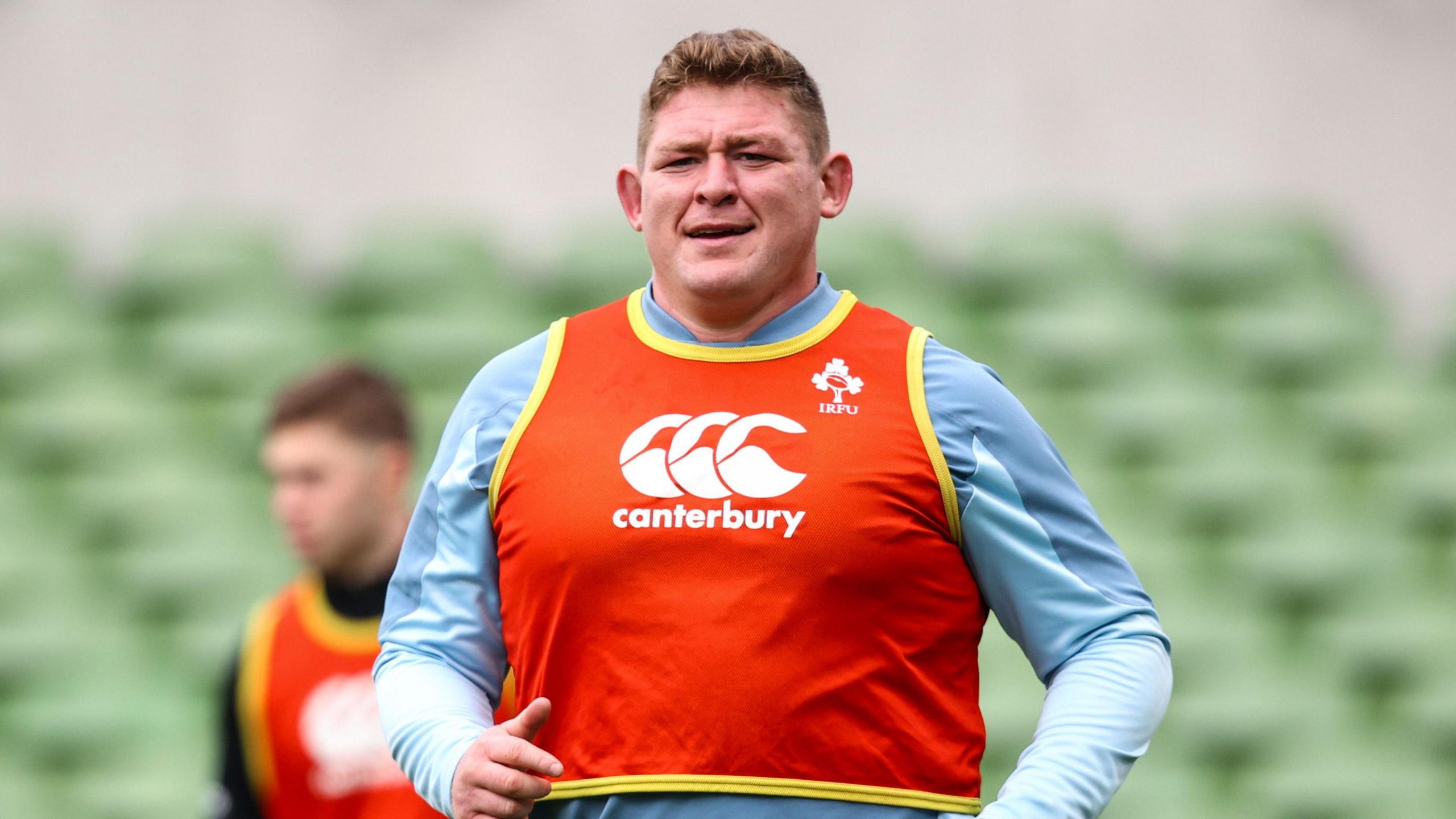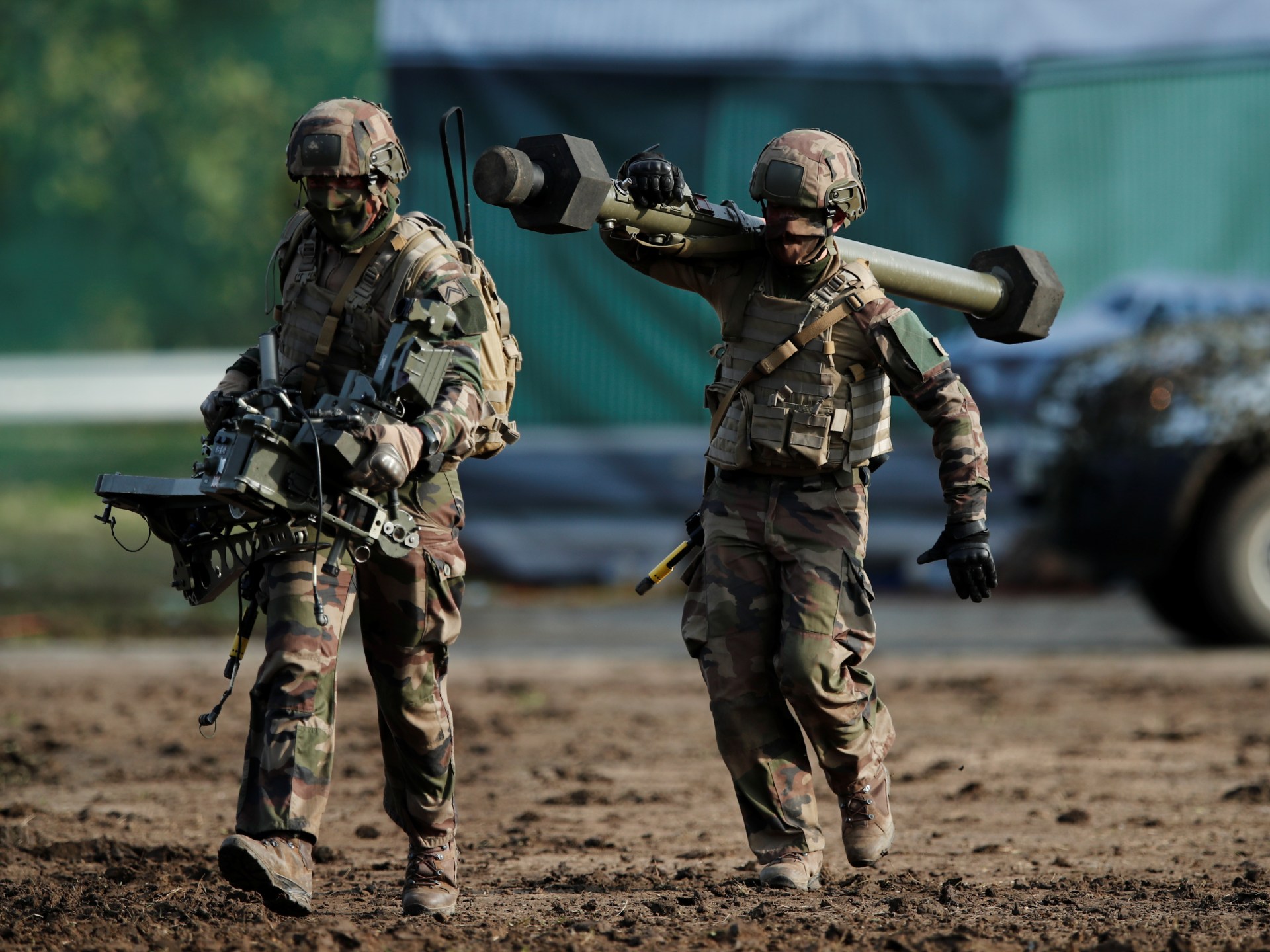BBC Radio 5 Live F1 commentator Harry Benjamin picks out five things to look out for at the season-opening Australian Grand Prix, including the rookies to watch and the Norris v Piastri dynamic.
Five things to look out for at Australian Grand Prix


BBC Radio 5 Live F1 commentator Harry Benjamin picks out five things to look out for at the season-opening Australian Grand Prix, including the rookies to watch and the Norris v Piastri dynamic.

Prop Tadhg Furlong is set to play his first Test since July when Ireland take on Italy in Rome in their last game of the 2025 Six Nations.
Simon Easterby’s side still have an outside chance of securing the title despite their defeat against France but must win at the Stadio Olimpico and hope results later in the day go their way.
The tight-head prop has been recovering from hamstring and calf injuries that caused him to miss the first four games of the championship as well as Ireland’s four Tests in the autumn.
He has not played any rugby since Leinster’s Champions Cup win over La Rochelle on 12 January.
Interim head coach Easterby also expects to have Mack Hansen back after the Connacht wing missed the loss to France with a quad injury.
Centre Garry Ringrose is available for Rome after suspension while decisions on wing James Lowe and hooker Ronan Kelleher will be made later in the week.
Lowe was a late change from the line-up to face France as a result of a back injury in the warm-up while Kelleher has had a neck issue.

Europe’s imports of weapons made by the United States have skyrocketed in the past five years, raising serious questions about whether the continent can achieve its vaunted goal of defence autonomy.
New research released on Monday by the Stockholm International Peace Research Institute (SIPRI), a leading defence and armaments think tank, shows Europe increased its imports of weapons two-and-a-half times over in the past five years compared with the previous five years.
Two-thirds of those imports came from the United States.
Europe’s ability to build its own weapons will materially affect how well it can defend Ukraine after a US arms cut-off, Matthew George, director of the SIPRI Arms Transfers Programme, told Al Jazeera.
“On one side, you have states increasing arms to counter the ‘ Russian threat ‘ but on the other, states will need to figure how they rearm and build up while also transferring stocks to Ukraine”, he said.
Most European Union members did not begin boosting their domestic weapons production until last year, the third year of Russia’s full-scale war in Ukraine.
“The West wasted these three years and didn’t prepare itself for this protracted war or any kind of horizontal escalations”, Oleksandr Danylyuk, a land warfare expert for the International Institute for Strategic Studies, told Al Jazeera.
“We have an escalation in terms of increasing numbers of Russian troops and bringing North Koreans into the war. The West hasn’t been prepared, unfortunately, but better late than never”.
Some observers are optimistic Europe will turn itself around.
“There’s actually a slight advantage here for Europe”, retired US Colonel Seth Krummrich, who currently serves as vice president for Global Guardian, a security consultant, told Al Jazeera.
“The days of World War II mass armour attacks are basically going away in this new AI-drone-driven warfare in that dirt laboratory that is Ukraine”.
Swarms of drones would be more effective than heavy armour, he suggested.
“I see an incredible opportunity for Europe to actually do future investment in what the next phase of war looks like, and there’s enough smart thinkers there that they can nail it right out of the gates”, Krummrich said.
Ukraine seems to be well ahead on this path.
Last year, the government in Kyiv set itself a goal to produce a million first-person view drones.
By October, it said it had received 1.3 million from Ukrainian suppliers and expected the figure to rise to 1.6 million by the end of December.
SIPRI’s research also showed that in the past five years, Ukraine became the world’s biggest arms importer, absorbing 8.8 percent of global transfers – a fact at odds with its goal of greater autonomy.
“I think that things cannot truly be different right now. We need lots of weapons”, Ukrainian parliamentarian Inna Sovsun, who has knowledge of defence matters, told Al Jazeera.
“We are fighting the second biggest army in the world, and the conflict is immense”, she said.
But she also pointed out that Ukraine’s defence industrial base had gone from a turnover of 1 billion euros ($1.08bn) when the autonomy policy was announced in December 2023 to 20 billion euros ($21.7bn) today, according to information from the Ministry of Defence.
“According to recent estimates by the Ministry of Defence, around 40 percent of weapons we are using now are being produced in Ukraine”, Sovsun said.
The Institute for the Study of War, a Washington, DC-based think tank, estimated that another 30 percent of Ukraine’s weapons were coming from the US and 30 percent from the EU and other allies.
Europe in theory could turbocharge a similar build-up of its own industrial base.
According to SIPRI’s findings, even though the US remained the world’s top arms exporter, claiming 43 percent of the market, Western European firms claimed 30 percent.
France, Italy, Spain, Sweden and Norway all increased their share of the global market in the 2020-2024 period, SIPRI showed. Poland’s share increased 40 times over.
The EU on Thursday announced it would authorise up to 800 billion euros ($868bn) in new debt for weapons procurement with $158bn earmarked to reward joint procurement from European firms.
Germany alone was mulling a 400-billion-euro ($434bn) defence spending boost.
“European defence has emerged as one of the biggest winners in global markets this year”, The Wall Street Journal wrote on Sunday.
Some of the largest European firms ‘ stocks have risen 67 percent or more, it said, beating market indices.
Russia, in contrast, lost two-thirds of its armaments export market over the past five years, including the three years in which its weapons have been on display in the war on Ukraine.
“The decline in Russia’s arms exports started before its full-scale invasion of Ukraine”, George said. “This was largely as a result of a decrease in orders from China and India”.
“For instance, India is shifting its arms supply relations towards Western suppliers, most notably France, Israel and the US. And despite recent public declarations from the two sides that relations between India and Russia remain friendly, the shift is also visible in India’s new and planned orders for major arms, most of which will come from Western suppliers”.
In China’s case, “its increasing ability to design and produce its own major arms means that it is far less reliant on arms imports than it was previously”, George said.
Krummrich was less charitable.
“Anyone out there with a cheque book, especially if it’s a limited budget, … they’re going to see what works and doesn’t work”, he said. “When they saw the Javelins blowing the]Russian] T-72 tank turrets 60ft]18 metres] into the air and stopping the entire first]invasion], … the best Russian forces destroyed in place, … no one’s going to buy that”.
While Europe is set to boost domestic production, it also has glaring weaknesses.
Barcelona coach Hansi Flick said his team will face Benfica in the Champions League on Tuesday playing for club doctor Carles Minarro, who died on Saturday.
The Catalan giants hold a 1-0 lead in the last 16 tie from the first leg in Lisbon ahead of the clash at the Olympic Stadium.
Barcelona’s La Liga match on Saturday against Osasuna was postponed 20 minutes before kick-off after the 53-year-old doctor died that afternoon.
READ ALSO: Ruthless Slot Demands More From Liverpool’s Week Of ‘Finals’
“It’s a huge loss, Carles was a really great person, but also a great doctor, and this combination of Ricard (Pruna, another club doctor) and him was unbelievable for the club and for the team,” Flick told a news conference Monday.
“(He was) one of the big puzzle (pieces) for the success, because they are doing a great job, and we miss him, but it’s also life. I think he will support us from above.
“The team also, we want to play… for him. Now in this situation, it’s very important that we win, and this is the focus, what we want to do tomorrow. ”
Doctor Minarro had been working with different Barcelona sides since 2017, and began working with the men’s football first team a few months ago.
Barcelona beat Benfica 5-4 in Lisbon in the group stage and then again with 10 men for most of the game last week after Pau Cubarsi was sent off.
However Flick said his squad would not take progress to the quarter-finals as a given, with Benfica beating Juventus on the road in the group stage and thrashing Atletico Madrid at home.
“None of us thinks that it’s done, and this is the important thing,” continued the coach.
“Their away matches in the Champions League, they are doing really great, they won a lot of matches away. So we have to think about that and take care. ”
Liverpool boss Arne Slot described Paris Saint Germain’s visit as the second of “three finals” in a week, but has warned much more is needed from the Premier League leaders to progress to the Champions League quarter-finals.
The Reds escaped the Parc des Princes with a 1-0 lead last week despite being battered by the French champions, who came up against an inspired Alisson Becker in the Liverpool goal.
The Brazilian number one said his nine-save display was the “performance of his life”.
Never before have Liverpool won the first leg of a European tie away and let the lead slip at Anfield.
However, Slot is taking nothing for granted based on what he saw from PSG.
READ ALSO:  , Man Utd ‘ Need More Brunos, ‘ Says Amorim After Fine Fernandes Free-Kick
Luis Enrique remained upbeat his side are “going to do it” despite suffering a first defeat in 23 games.
Adding to Slot’s concern was the lethargic first 45 minutes from his side against rock bottom Southampton in Saturday’s 3-1 win that forced the Dutchman into three half-time substitutions.
The Saints, who have won just nine points from 28 games all season, took a shock lead into the break before Darwin Nunez and two Mohamed Salah penalties turned the game around to stretch Liverpool’s lead at the top of the Premier League to 15 points.
The League Cup final against Newcastle is also around the corner on Sunday with Slot very much on track for a treble in his first season in charge.
“The first of three finals”, he said of the victory over Southampton. “I do hope the next two finals we will play a bit better than the first one.
” The only good thing in the first 45 minutes was that they saved their energy (or PSG) and didn’t run at all. It was maybe the first time this season I saw this tempo.
“When I look at the game against PSG, we need to go one step up in terms of intensity. But if I compare it with the game today (Saturday), we need to go three, four, five, six or seven steps up in terms of intensity if we want to have any chance of reaching the next round”.
Salah conceded that he had rarely seeing his manager so furious as he was during a half-time tirade that helped the turn the Southampton game around.
“The manager was like going for us”, said the Egyptian. “That’s something you need sometimes”.
Slot has had little reason to lose his cool in his first nine months as Jurgen Klopp’s successor.
But he has shown his ruthless side when needed to keep Liverpool on course for just the fourth treble for an English side that would include the league title and Champions League.
Harvey Elliott scored the smash-and-grab winner in Paris with his first touch after replacing Salah, who had a rare off night.
Nunez’s work rate was questioned by his coach after disappointing displays against Wolves and Aston Villa, when he missed a glorious chance to win the game, last month.
The Uruguayan has bounced back to deliver the assist for Elliott at the Parc des Princes and then sparked the fightback against Southampton with his first goal in 11 games.
Many believed Nunez would have been one of those sacrificed by Slot’s triple half-time change, but he rewarded his manager’s patience.
“I always hate the idea, if we need to score goals, to take someone off that can score a goal”, added Slot.
“That’s also the life of a number nine – you go from missing a chance to scoring an important goal”.
After a pummelling in Paris, Slot is determined Liverpool do not make the same mistake in their quest for a seventh European Cup.
The government of Syria says it has ended an operation in the coastal governorates of Latakia and Tartous after four days of fighting between security forces and pro-Assad armed fighters.
The unrest came only three months after the fall of Syria’s Bashar al-Assad in an offensive by opposition fighters.
Reports from the Latakia region told of killings, kidnappings, theft, harassment and even public murders.
So, what happened and who did this? Here’s what we know about the violence:
On March 6, government forces began deploying to the coastal cities of Syria, including Latakia, Banias, Tartous and Jableh to fight what they dubbed “regime remnants”.
The “remnants” are pro-Assad regime fighters who have announced their opposition to the new government.
The Alawite religious sect, from which Bashar al-Assad hails, is concentrated in these cities.
On March 6, pro-Assad gunmen ambushed military personnel in and around Latakia in the northwest, killing at least 16 members of the security forces and the Ministry of Defence.
According to state media, the March 6 ambushes were not the first, with several past attacks on government forces since al-Assad fell.
Numbers are still emerging, but here’s what we know.
According to a March 9 report by the Syrian Observatory for Human Rights (SOHR), at least 1, 311 people have been killed as of Saturday evening – some 830 were civilians, 230 security personnel from various branches, and about 250 armed fighters.
Al Jazeera has not been able to independently verify SOHR’s numbers.
The Latakia-Tartous axis lies along Syria’s Mediterranean coast, with Banias and Jableh lying between them.
These two Alawi-majority governorates have long been considered al-Assad strongholds, with the family’s hometown, al-Qerdaha, lying east of Latakia.
When al-Assad fell, observers feared there would be revenge attacks against the Alawite community.
This may be why “regime remnants” chose to attack there – possibly hoping to inflame sectarian tensions.
Banias also hosts Syria’s largest oil refinery. Armed fighters tried to attack the refinery, security forces said, but were repelled.
State security troops confronted armed groups led by former officers in al-Assad’s army.
There are also unidentified groups who went to the coast to “avenge” the ambushed security forces, an unidentified security official told Syria’s state news agency.
The presence of these individuals, the official said, had “led to some individual violations and we are working on stop them”.
Alawite community members said armed groups have been harassing and kidnapping Alawite civilians.
The Syrian government estimates there are 5, 000 armed individuals in the coastal area.
Videos on social media since February show former al-Assad army officer Muqdad Fteiha declaring the formation of a group to counter “HTS violations” in the coastal region.
Fleiha, who was in al-Assad’s Republican Guard, claims in his message that the Alawite community is mistreated.
Other statements on social media, attributed to former al-Assad army Brigadier General Ghiath Suleiman Dalla, declared the formation of a “Military Council for the Liberation of Syria” to “expel all occupying terrorist forces” and “dismantle the repressive sectarian security apparatus”.
The escalating violence presented a huge challenge for Syria’s interim President Ahmed al-Sharaa.
On Sunday, al-Sharaa announced two new committees to deal with the crisis.
One is an independent committee of judges and lawyers to investigate the March 6 attacks and the violence that ensued and hold those responsible accountable, in pursuit of “higher national interest and civil peace”.
The second is a “Supreme Committee for Civil Peace”, tasked with engaging with the residents of the affected areas and safeguarding their security.
Earlier on Sunday, he spoke at a Damascus mosque, acknowledging the severity of the crisis and calling for national unity.
On Friday, March 7, he reaffirmed in a televised address his commitment to stability, and promised to pursue regime loyalists responsible for crimes and to consolidate state control over weapons.
People are scared, panic has taken over the coastal regions.
“I don’t ever go outside and I don’t even open the windows… There is no security here. There is no security for Alawis”, a resident of Latakia who chose to remain anonymous, told Al Jazeera.
Those who remain speak of living in terror, fearing that armed fighters will attack them in their homes.